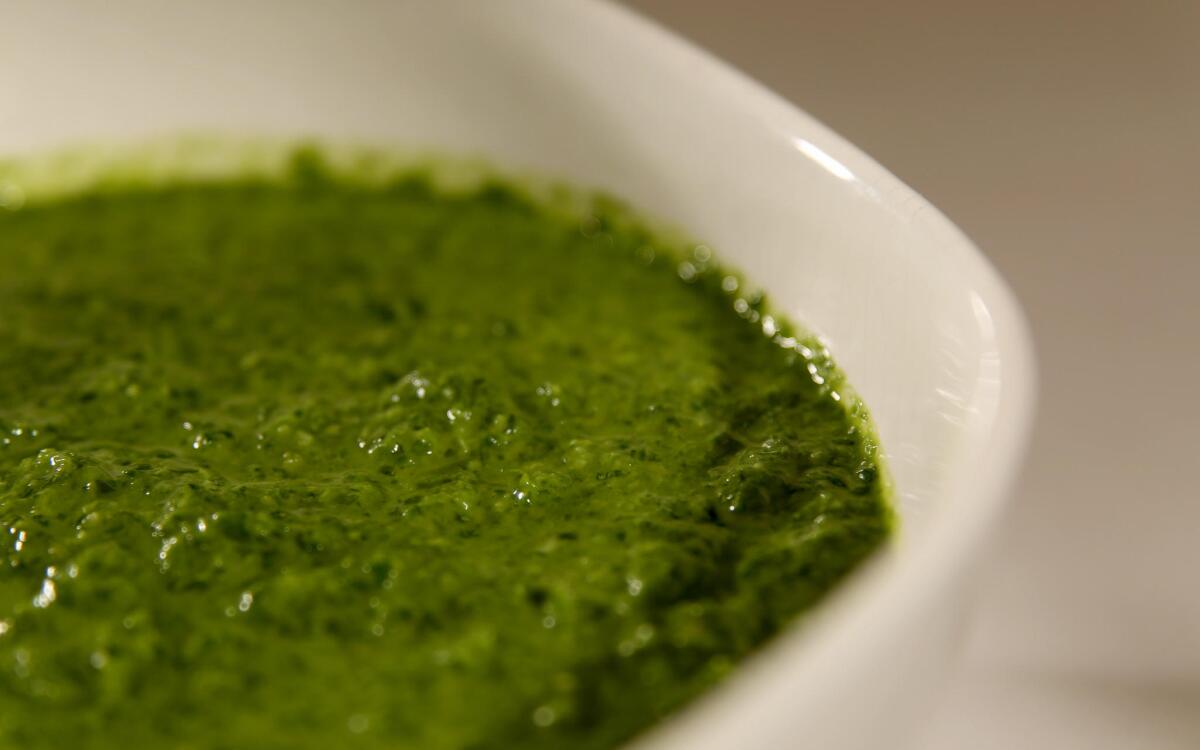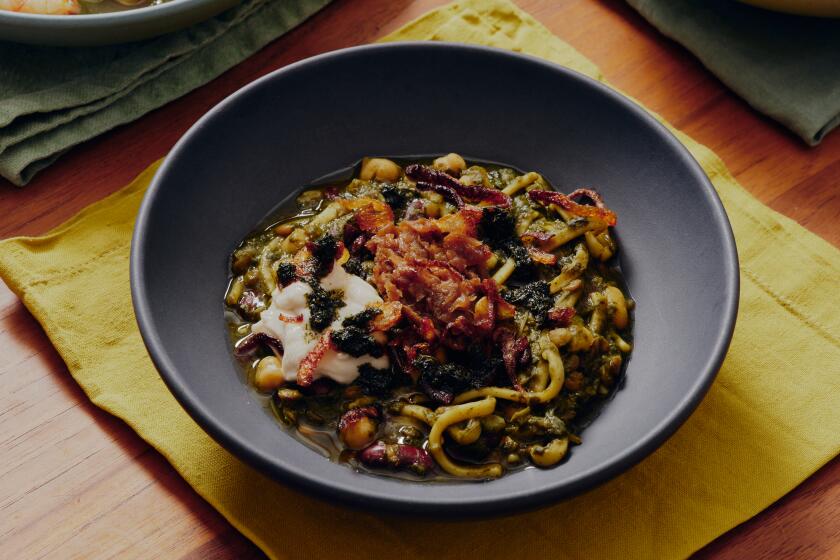Salsa verde

Call it whatever you like, salsa verde can be one of the most versatile and lovely sauces in any cook’s repertoire.
It’s easy, as you just throw a bunch of green stuff in a food processor (or a blender, or a mortar and pestle). It’s seasonally adjustable; the green stuff can be whatever you find at the farmers market — or languishing in your refrigerator. And you can tailor it to what you feel like cooking.
Historically, salsa verde has been many things to many people. In general, it’s defined as a sauce of herbs, some sort of acid (vinegar, citrus), olive oil (or mayonnaise) and perhaps dairy. You can add anchovies and capers or make it with or without tomatillos, garlic, onions and, of course, chiles.
Here, raw jalapeño can be added for extra heat. Lemons can be substituted for the limes, parsley can be substituted for the cilantro (or use a combination), and one or a combination of other tender greens (such as baby chard, kale, arugula or other herbs) can be substituted for the spinach.
As for what exactly to do with a Mason jar of this stuff when you’re done, think of it as a dipping sauce, a condiment — a salad in a cup. Not unlike gremolata or pistou, it’s good spooned onto grilled meat, fish and chicken, or into soups. Stir plenty of it into a big bowl of brown rice or a somewhat smaller bowl of ricotta. Dip your bread into it, or use it as a sauce for tacos or savory crepes.
From the story: Salsa verde is green with possibilities as a sauce, dip or flavoring
Put the garlic, salt, lime juice and zest into a food processor, and process until the garlic is chopped up. Add the cilantro, greens and olive oil, and process until smooth. Add water as needed to achieve the consistency of sauce.
Get our Cooking newsletter.
Your roundup of inspiring recipes and kitchen tricks.
You may occasionally receive promotional content from the Los Angeles Times.
















